Pease airport workers battle extreme temperature of 115 degrees on runway 'heat island'
PORTSMOUTH — Madeline Tate looks down the runway at Portsmouth International Airport at Pease, squinting her eyes and a bead of sweat running down her temple, as a plane taxis to Port City Air for service and refueling.
In the distance under the midday sun, the 11,321-foot-long runway and accompanying tarmac looks flooded — it’s a mirage of the mind as temperatures rise and beat down unobstructed on the acres of concrete and asphalt.
“The sun is definitely not your friend out here,” Tate said, as she checked gauges and set levers beside the large fuel storage tanks, known as the fuel farm, to prepare for a refueling.
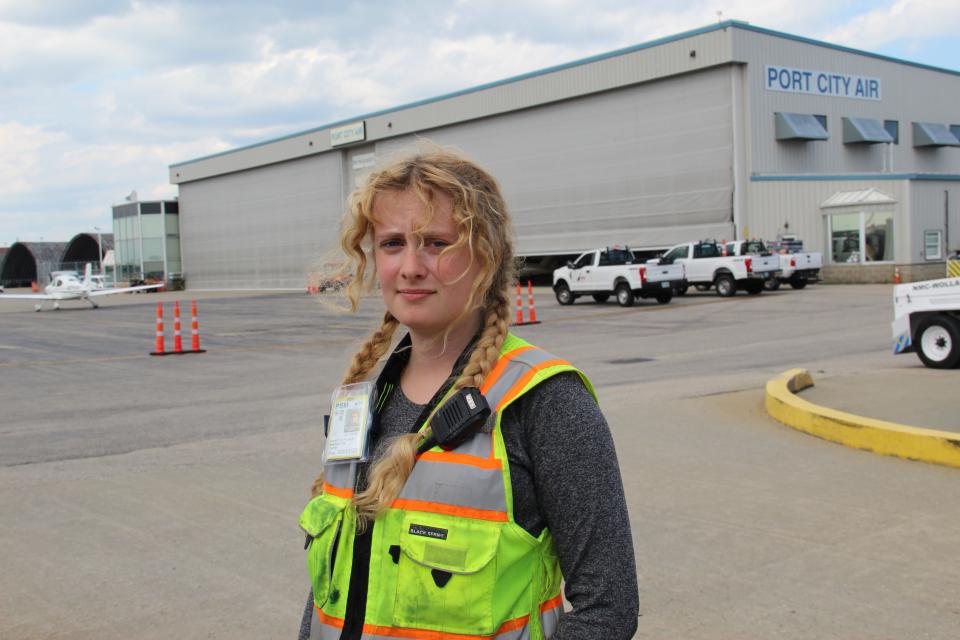
Tate, 26, of Newmarket, is one of the many line service technicians at Port City Air, whose job is to keep the planes that fly in and out of the airport fueled, maintained and ready to fly.
Tate wears pants and light long sleeves beneath her bright yellow vest to protect herself, but it isn’t uncommon for her to still feel the effects of the sun.
Climate change: Prescott Park upgrades in Portsmouth to protect against rising waters fast-tracked to 2023
The area is under a heat advisory for Thursday, as heat and humidity could make some spots feel near 100 degrees. Weeks like this, where local area temperatures reach into the high 90s can be more than just unpleasant, it can be dangerous.
“On super bright, sunny days as soon as the sun goes down, my head just throbs,” Tate said. “You would think that when the sun goes down there would be relief, but not when you’ve been in it all day. If it’s 90 degrees in Portsmouth, it’s at least over 100 degrees out here.”
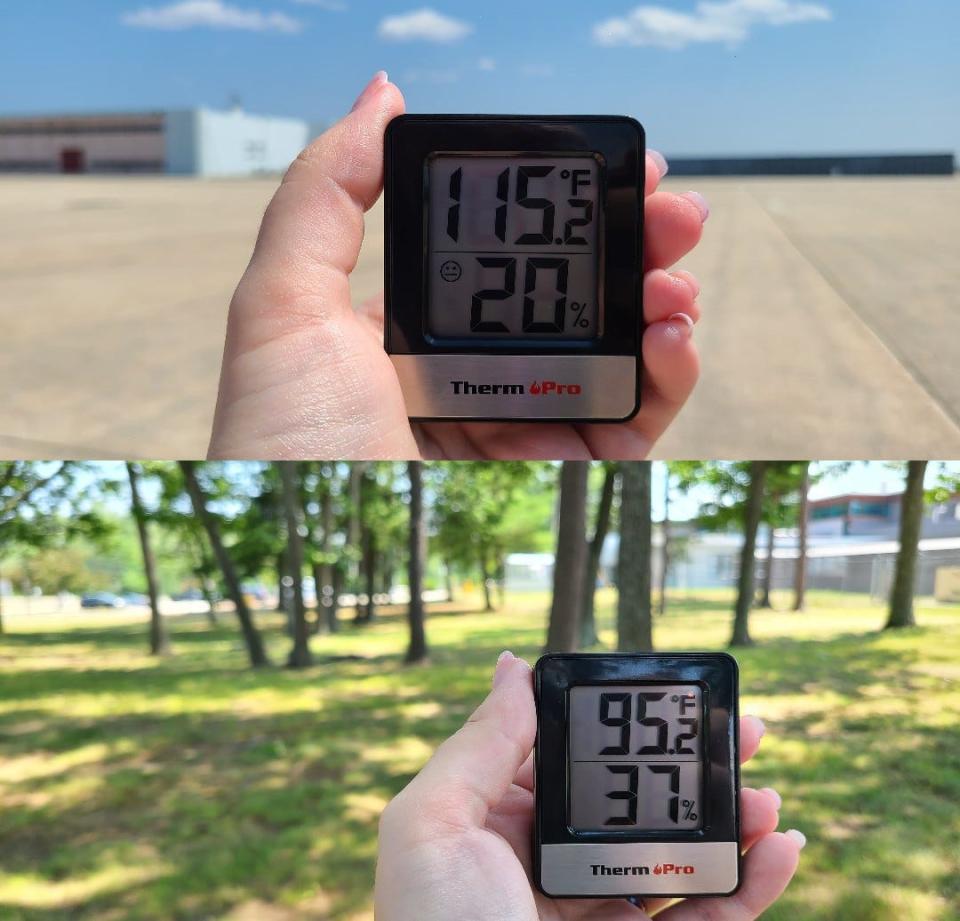
Most major cities are designated and other large developed areas are considered “heat islands.” Areas like the Portsmouth International Airport and the surrounding Pease Tradeport fit the bill to be labeled as a heat island, too.
What is a heat island?
Areas prone to suffering from the urban heat effect are often designated as "heat islands."
Heat islands are areas made up of primarily impervious surfaces — such as pavement, roofing, industrial and commercial uses — and lack the benefits of shade from a forested area. They absorb more heat than outlying areas within the same city, and they don't really cool off at night.
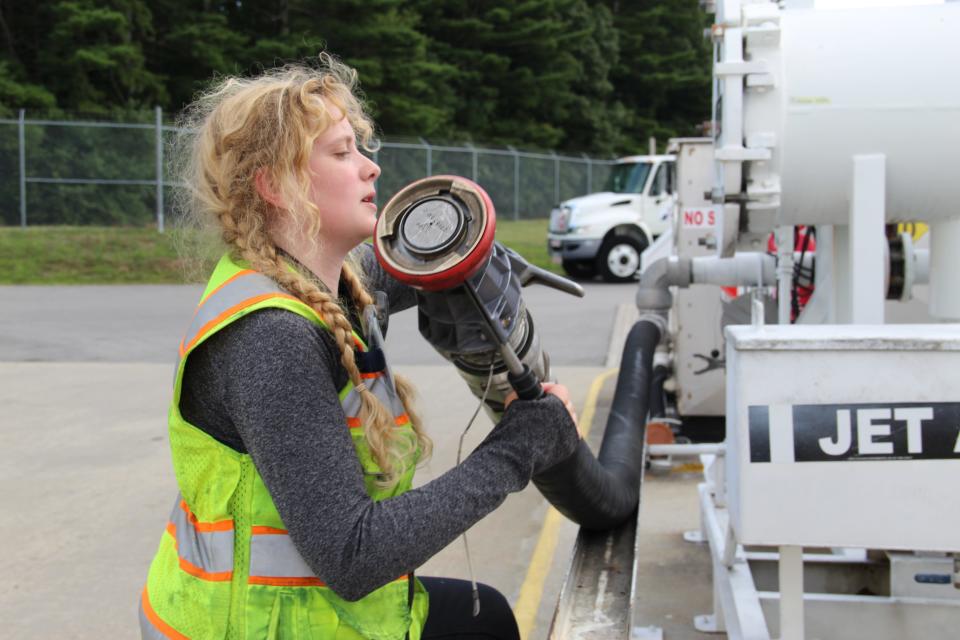
The urban heat effect can make it harder for the human body to bounce back from a hot day’s dangerous effects, especially in the case of elderly people, children and individuals dealing with asthma, diabetes, high blood pressure and other health concerns.
From 1992 to 2021, extreme heat killed an average of 158 people per year in the United States, more than any other weather hazard.
We created scorching 'heat islands' in East Coast cities:Now they're becoming unlivable
“It doesn’t take much for the heat to affect you,” Tate said.
Tate hates the heat, but says there’s little relief in the winter. The wide open area of the airport doesn’t block the wind, creating a stronger windchill.
Temperatures rise, little relief
At 2 p.m. Friday, July 22, the tarmac registered a temperature of 115 degrees Fahrenheit, with slight winds out of the southwest. A simultaneous check of the National Weather Service website said 90 degrees for the area. The nearly 25-degree difference is a result of higher temperatures and the airport's massive acreage of concrete and asphalt with few trees.
A temperature reading taken in a grassy, shaded area beside the airport immediately after, read 95 degrees. Even in the shade, the area is still impacted by the excess heat radiating from the heat island.
It's getting hot in here: New England summer temperatures will likely be above normal
The Pease Tradeport surrounding the airport is full of paved parking areas and industrial buildings. A reading was taken a half-mile away from the airport on the same 90-degree day at the paved blacktop parking lot of Sig Sauer at Pease, which read it was 95 degrees.
This is an example of the effects of heat islands on nearby areas.
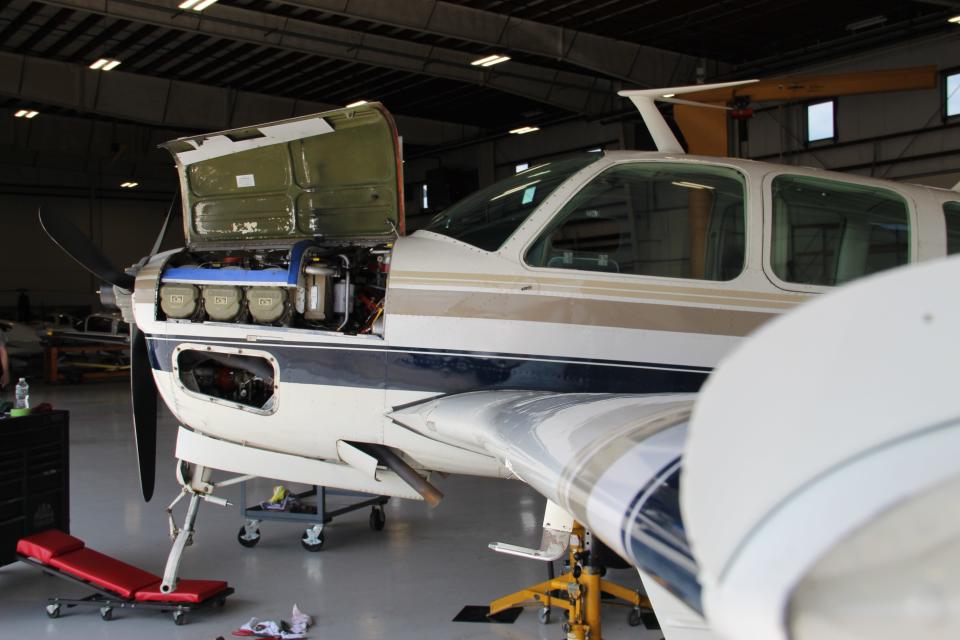
Jamie McCarthy, director of operations for Port City Air, says when you have a vast area like the airport, it acts like a big battery, soaking up sunlight all day and gradually releasing energy and heat over time.
“There's very little escape from that heat on a busy day,” McCarthy said. “The concrete is three times deeper than a typical road or paved surface. You don’t notice how much heat is soaked up into the concrete beneath your feet until you feel it radiating that heat at night, after the surrounding temperatures have cooled off."
Climate anxiety: Feeling hopeless, not wanting to have kids. What can you do about it?
Fran Witkowski, the Pease Development Authority's airport operations manager, said maintenance staff spend less time outside than the line staff at Port City Air, but they are tasked with ensuring the runway and grounds remain safe for the planes. Over time, weather can take its toll on the integrity of the runway. The airport management team undertook a massive end-to-end repaving project two years ago.
No way to beat the heat
Line service technician Daniel Cerritos, 23, of Manchester, guides a newly landed plane to the hangar at Pease, signaling to the pilot with two bright orange cones in his hands.
Some days the flight schedule is bare, other days it’s jam packed with flights coming in back-to-back.
“On busy days, we could be out there most of the day on those days,” Cerritos said. “We try to stay hydrated, but it’s easy to get caught up in what you’re doing and forget.”
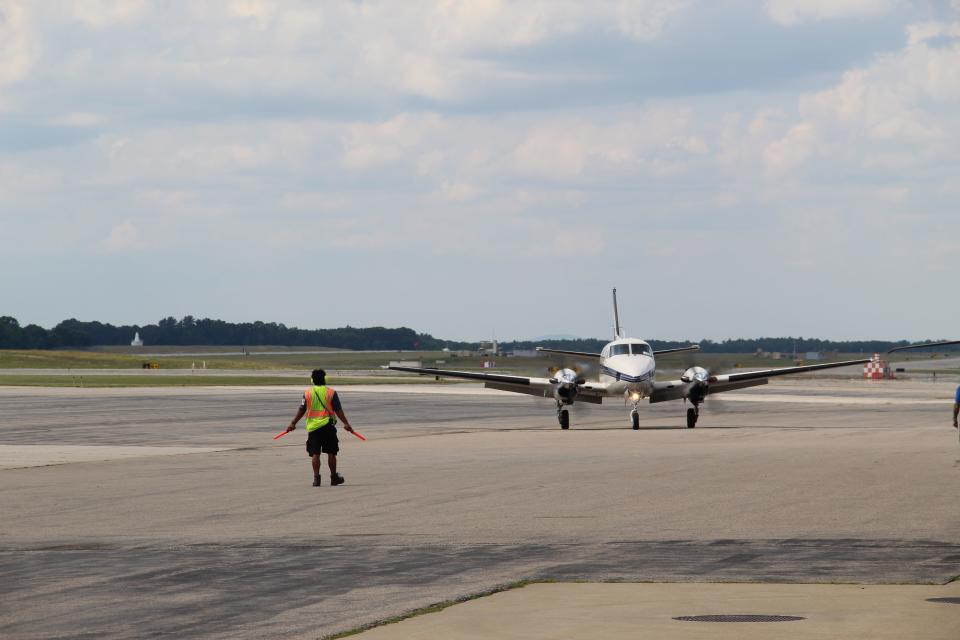
Cerritos said he is prone to cluster headaches, which can be crippling on days where there are few breaks from the heat.
Tate said there’s little relief in standing behind a field truck or under an airplane wing for shade.
There’s a mountain of stacked Gatorade and bottled water supply in the breakroom of Port City Air. Staff like Tate and Cerritos are rotated throughout the day to offer some respite.
McCarthy said knowing the signs of heat-related illnesses is vital to keep the team healthy and safe. As a former airplane mechanic, he knows firsthand just how unbearable the heat can be, compounded with the heat radiating from the aircraft or machinery and the heat reflecting from the ground. He said fatigue, dizziness and headaches are often the first signs.
In late July: Exeter joins 50-plus communities in imposing outdoor water use restrictions amid drought
McCarthy said while the heat doesn’t typically affect operations too much, they do pay extra attention to piston engine aircraft, which are more susceptible to overheating in the hot weather, and to the fuel farm because fuel can expand. McCarthy said due to the demanding nature of the job, hiring for line staff and airplane mechanics has been a huge challenge.
While some days are more bearable than others, both Tate and Cerritos said they love their jobs. Both started roughly three years ago because of their interest in aviation.
Cerritos enjoys getting to see the “inner workings of an airport” in how much time and effort is put into every plane to get it to its next destination, and Tate loves experiencing how each day varies from the day before.
This article originally appeared on Fosters Daily Democrat: Portsmouth, NH airport workers deal with extreme heat

